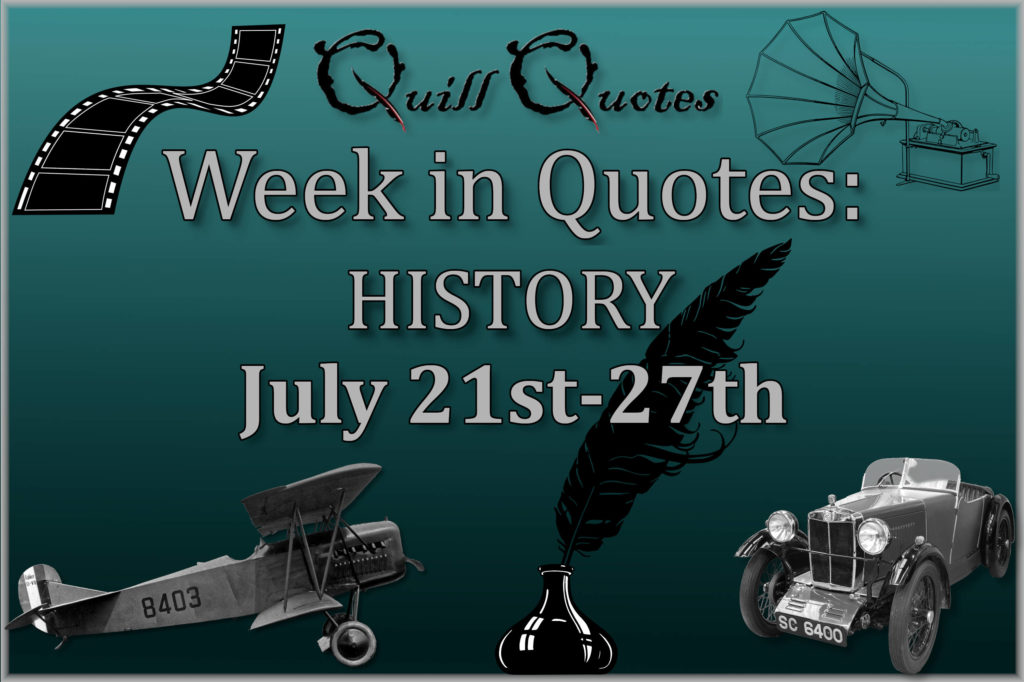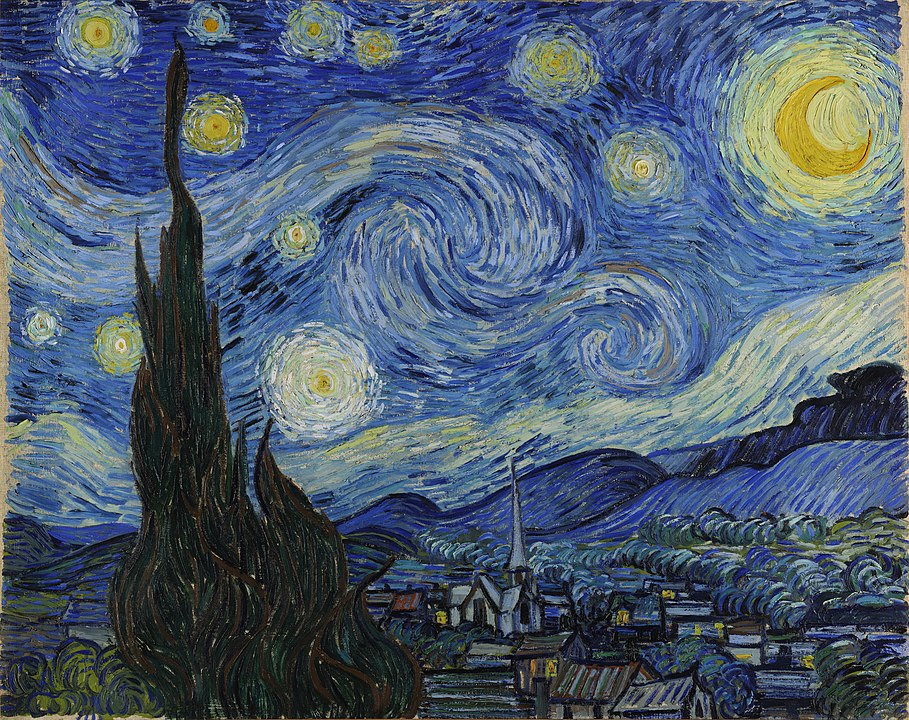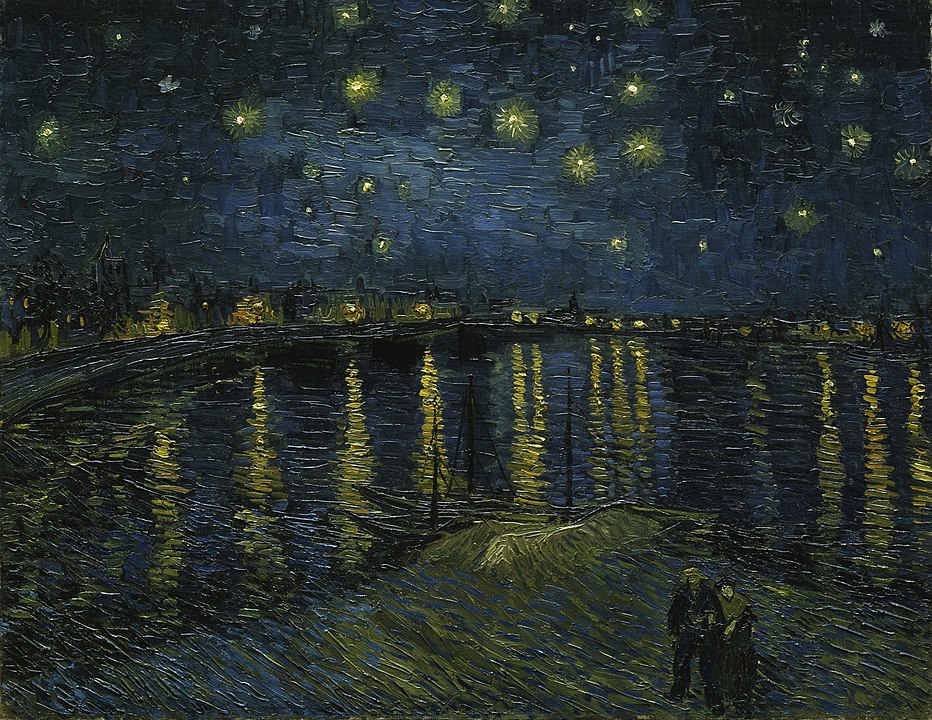There is always much to learn from quotes and their historical significance. Read on for a collection of quotes and general history from July 21st – 27th.

July 21, 1865
“I have never insulted man or woman in my life, but if you knew what a wholesome regard I have for damn liars and rascals, they would be liable to keep out of my way.”
– Wild Bill Hickok
On July 21st, 1865, Wild Bill Hickok shoots and kills Davis Tutt in one of the first western quick-draw duels. They met in the town square of Springfield, Missouri after Tutt took Hickok’s gold pocket watch as collateral for a perceived gambling debt. Hickok felt he owed $25, while Tutt requested $35 and later $45. Failing to negotiate a deal, they drew their pistols and each fired a single shot from about 75 yards apart. Tutt missed, but Hickok did not, reportedly causing Tutt to call out “Boys, I’m killed” before he collapsed. Hickok was arrested for murder several days later. However, the jury found him justified in shooting Tutt and acquitted him under the unwritten law of the “fair fight.”
July 22, 1934
“All my life I wanted to be a bank robber. Carry a gun and wear a mask. Now that it’s happened I guess I’m just about the best bank robber they ever had. And I sure am happy.”
– John Dillinger
John Dillinger, the notorious American gangster, was killed by federal agents outside Chicago’s Biograph Theater on July 22, 1934. Dillinger participated in at least 12 bank robberies between June 1933 and June 1934 with the Dillinger Gang. These high-profile robberies and Dillinger’s publicity in the media led the Bureau of Investigation (BOI) to name him “Public Enemy No. 1” in 1934. This fame quickly caught up with him when Ana Cumpănaș, the owner of the brothel where Dillinger was staying, informed police of his whereabouts to avoid deportation. She wore red so agents could easily identify Dillinger exiting the theater and arrest him, however, Dillinger attempted to flee and was shot several times. Then BOI Director, J. Edgar Hoover, used the success against Dillinger and other organized crime to expand the bureau into the Federal Bureau of Investigation (FBI) we know today.

July 23, 1982
“On my second swim at Deception Island, the water was very clear and I was looking at hundreds of whale bones beneath me. It was a graveyard from the whaling sometime in the 1920s-30s.”
– Lewis Gordon Pugh
On July 23, 1982, the International Whaling Commission (IWC) voted to ban commercial whaling beginning in 1985. The IWC regulates hunting of 13 great whale species for the 89 member countries. However, despite the ban, some countries continue commercial whaling either under scientific permits or in opposition to the ban. The IWC ban also allows for subsistence whaling by indigenous peoples. Thanks to the efforts of the IWC and other organizations, many whale populations are now increasing but still face dangers from ship collisions, pollution, and by-catch in other fishing operations.
July 24, 1911
“Few romances can ever surpass that of the granite citadel on top of the beetling precipices of Machu Picchu, the crown of Inca Land.
In the variety of its charms and the power of its spell, I know of no place in the world which can compare with it.”
– Hiram Bingham
On July 24, 1911, Hiram Bingham discovered Machu Picchu while on a Peruvian expedition from Yale University. While several others claim to have discovered the ruins first, Bingham is widely recognized as the man who brought the site to world attention. Bingham believed Machu Picchu housed a major religious shrine and served as a religious training center for the Inca. However, archaeological research has since determined Machu Picchu was actually a royal estate where Inca leaders spent the summer. Bingham’s book, Lost City of the Incas, was a bestseller after publication in 1948.
July 25, 1814
“The rage for railroads is so great that many will be laid in parts where they will not pay.”
– George Stephenson
George Stephenson, renowned as the “Father of Railways”, introduced his first steam locomotive on July 25, 1814. The travelling engine, named Blücher, was used for hauling coal on the Killingworth wagonway in England. This led to the building of Locomotion No. 1 by George and his son Robert for the Stockton and Darlington Railway, which became the first steam locomotive to carry passengers on a public rail line in 1825. Stephenson’s chosen rail gauge, 4 feet 8.5 inches (1,435 mm) between rails, has become the most widely used in the world and is often called “Stephenson gauge”.
July 26, 1875
“I’ve labored long and hard for bread,
For honor, and for riches,
But on my corns too long you’ve tread,
You fine-haired sons of bitches.Here I lay me down to sleep
– Black Bart
To wait the coming morrow,
Perhaps success, perhaps defeat,
And everlasting sorrow.
Let come what will, I’ll try it on,
My condition can’t be worse;
And if there’s money in that box
‘Tis munny in my purse.
On July 26, 1875, Charles Earl Boles, also known as Black Bart, robbed his first stagecoach. Between 1875 and 1883, he proceeded to rob at least 28 Wells Fargo stagecoaches in northern California. Due to his sophisticated style and several poems left behind at his robberies, Black Bart gained a reputation as one of the most notorious stagecoach robbers of the era. He was eventually caught and served 4 years in prison, disappearing upon his release in 1888. It is estimated he stole around $18,000 in total, which would be worth $1 to 2 million today!
July 27, 1890
“I put my heart and my soul into my work, and have lost my mind in the process.”
– Vincent Van Gogh
Vincent Van Gogh shot himself in the chest on July 27, 1890, dying 2 days later at the age of 37. Unfortunately, Van Gogh’s mental illness was misunderstood and his art was largely unsuccessful during his lifetime. According to his younger brother, Theo, who helped support Vincent financially and was there at his death, his final words were: “the sadness will last forever”. Following his suicide, Van Gogh’s reputation began to grow and his artwork is now renowned around the world.


While “The Starry Night” is one of Van Gogh’s most famous paintings, I personally prefer the similarly named “Starry Night Over the Rhone”. I think this is because of the more realistic style and darker colors. Which do you prefer, and why? Do you have a different favorite from Van Gogh? Let me know in the comments!

In case you missed last week’s quotes, see History July 14th – 20th.
To never miss a Quill Quotes post, please subscribe to our free Email Newsletter and follow us on Social Media.
I like Van Gogh’s “Sunflowers.” I recently unpacked a print of his Starry Night from a visit to an art museum as a child that I plan to frame for my office. I don’t remember ever seeing his Starry Night Over the Rhone. It is a more realistic portrayal of a river scene at night but does not provide the insight into the turmoil in his head.
“Sunflowers” is another good one! It and “Starry Night” probably do better reflect Van Gogh’s story and mental turmoil.
I hadn’t seen “Starry Night Over the Rhone” either until researching Van Gogh for this post. Something about it speaks to me though and I’d like to see it in person someday. It’s currently on display at the Musée d’Orsay in Paris.